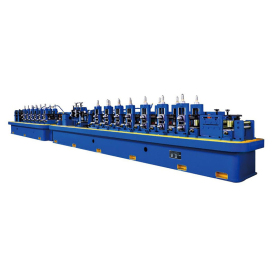[High-efficiency induction heating equipment]Unlocking the Future of Metal Processing: The Advantages of High-Efficiency Induction Heating Equipment in Modern Manufacturing
****
In recent years, the manufacturing industry has undergone a significant evolution, driven by the need for higher efficiency, precision, and sustainability. Among the technologies leading this transformation is high-efficiency induction heating equipment, which has positioned itself as a game-changer in metal processing applications. With advancements in induction heating technology, manufacturers can now achieve superior results, driving productivity and reducing energy consumption. This article delves into the mechanics, benefits, and applications of high-efficiency induction heating equipment, underscoring its vital role in contemporary manufacturing.

Unlocking the Future of Metal Processing: The Advantages of High-Efficiency Induction Heating Equipment in Modern Manufacturing
Understanding High-Efficiency Induction Heating
Induction heating is a process that utilizes electromagnetic induction to heat electrically conductive materials. The fundamental principle involves generating an alternating magnetic field, which induces eddy currents within the target material. This results in rapid heating without direct contact, making induction heating exceptionally clean, efficient, and precise.
High-efficiency induction heating equipment incorporates the latest innovations in power electronics and control systems. These advancements enable manufacturers to optimize energy consumption while improving heat uniformity and reducing cycle times. In the context of rising energy costs and environmental awareness, this modernization makes induction heating an attractive alternative to traditional heating methods, such as furnaces or gas flame heating.
Benefits of High-Efficiency Induction Heating Equipment
1. **Energy Efficiency**: One of the most compelling advantages of high-efficiency induction heating equipment is its energy efficiency. Traditional heating methods often waste a significant amount of energy, as heat is generated outside the workpiece and must be conducted into the material. In contrast, induction heating generates heat directly within the metal, minimizing energy loss and reducing operating costs.
2. **Precision and Control**: The ability to control the heating process with high precision is crucial in metal processing. Induction heating allows for fine-tuning of parameters such as temperature, rate of heating, and cycle duration. This control facilitates uniform heating, reducing the risk of thermal distortion and ensuring consistent product quality.
3. **Rapid Heating**: High-efficiency induction heating equipment heats materials quickly, enabling faster production cycles and increased throughput. This rapid heating is particularly beneficial for applications like hardening, tempering, and welding, where speed is essential to maintain production schedules.
4. **Versatility**: This technology is versatile and can be adapted for various applications, including forging, soldering, brazing, melting, and heat treating. This flexibility allows manufacturers to utilize induction heating for a wide range of materials and processes, streamlining operations and reducing the need for multiple heating systems.
5. **Reduced Environmental Impact**: With an increasing focus on sustainability, high-efficiency induction heating offers a more eco-friendly alternative. The reduction in energy consumption leads to lower greenhouse gas emissions, and the absence of combustion processes minimizes pollutants released into the atmosphere.
Applications in Modern Manufacturing

Unlocking the Future of Metal Processing: The Advantages of High-Efficiency Induction Heating Equipment in Modern Manufacturing
High-efficiency induction heating equipment is used across various industries, demonstrating its broad market applicability. Some key applications include:
– **Automotive Industry**: Induction heating is widely used in the automotive sector for heat treating components, surface hardening, and soldering electrical connections. Its ability to deliver rapid and uniform heating improves the performance and longevity of automotive parts.
– **Tool and Die Manufacturing**: In tool production, induction heating is employed for hardening cutting tools and dies, ensuring they maintain sharpness and durability under extreme conditions.
– **Aerospace**: The aerospace industry benefits from induction heating for applications requiring high precision and reliability, such as the bonding and hardening of critical components.
– **Electronics**: This technology is also gaining traction in electronics manufacturing for processes like soldering and semiconductor fabrication, where precise thermal control is paramount.

Unlocking the Future of Metal Processing: The Advantages of High-Efficiency Induction Heating Equipment in Modern Manufacturing
Conclusion
High-efficiency induction heating equipment is ushering in a new era for metal processing in manufacturing. With its remarkable energy efficiency, precision, and versatility, it addresses the ever-growing demands for higher productivity and sustainability. As industries across the globe continue to seek innovative solutions to enhance efficiency and reduce environmental footprints, high-efficiency induction heating stands out as a vital technology that will shape the future of modern manufacturing. By investing in this advanced equipment, manufacturers not only optimize their processes but also contribute to a more sustainable and efficient industrial landscape.All-in-one High Frequency Welder Machine
